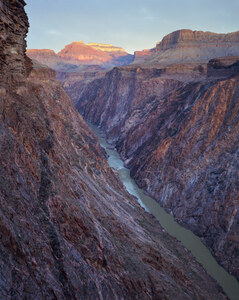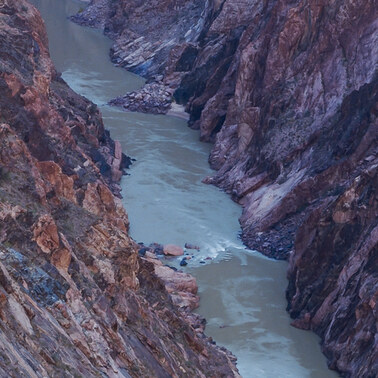
Dawn, Upper Granite Gorge, Grand Canyon, Arizona
For a four-day knapsack trip into the Grand Canyon in the fall of 1978, I could only afford a single ten-sheet box of film. On the last evening of our trip, the three of us were camped on the Tonto Plateau, which surrounds the inner gorge in much of the Canyon, beside a little gully of a side canyon that I knew would lead shortly to the colossal gash that lay hidden from sight, though the precipice was less than a hundred yards away. I thought to follow the twisting slot toward the river, and came upon the inevitable shock, where I stood on a flat rock surface 30 feet below the plateau, looking 1,400 feet down to the river below. By then, I had but one sheet left. Just before dawn the next morning, I emerged from my down cocoon and once again followed the gully to the brink. I did my composition, and waited for an incredibly obliging sunrise to reach its optimum. The exposure was made without regrets. Much to my surprise, the sun had risen precisely at that point on the horizon, south of east, where it shone directly up this straightest of all sections of the inner gorge.
There is a pale speck visible in the dike of black rock running vertically near the left side of the image, which is in fact the base of an agave, nearly four feet across. The Vishnu Schist of the inner gorge is about 1,800,000,000 years old, or 38 percent of the age of the Earth—some of the oldest rock ever found. It was metamorphosed by gigantic pressures beneath a huge, ancient mountain range, which washed to an ancient sea a very long time ago.

